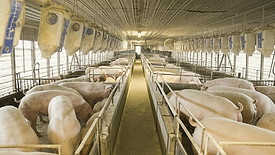Microbiological
Avian Influenza, Food Safety Messaging, and Biosurveillance
Companies will need to think more strategically about how food safety assurance messaging must be made complimentary to traditional food safety practices
Robert A. Norton Ph.D.
Cris A. Young D.V.M., M.P.H., Diplomate A.C.V.P.M.
Daniel M. Gerstein Ph.D.
Marcus (Marc) Sachs P.E.
August 8, 2024
Never miss the latest news and trends driving the food safety industry
eNewsletter | Website | eMagazine
JOIN TODAY!Copyright ©2024. All Rights Reserved BNP Media.
Design, CMS, Hosting & Web Development :: ePublishing










